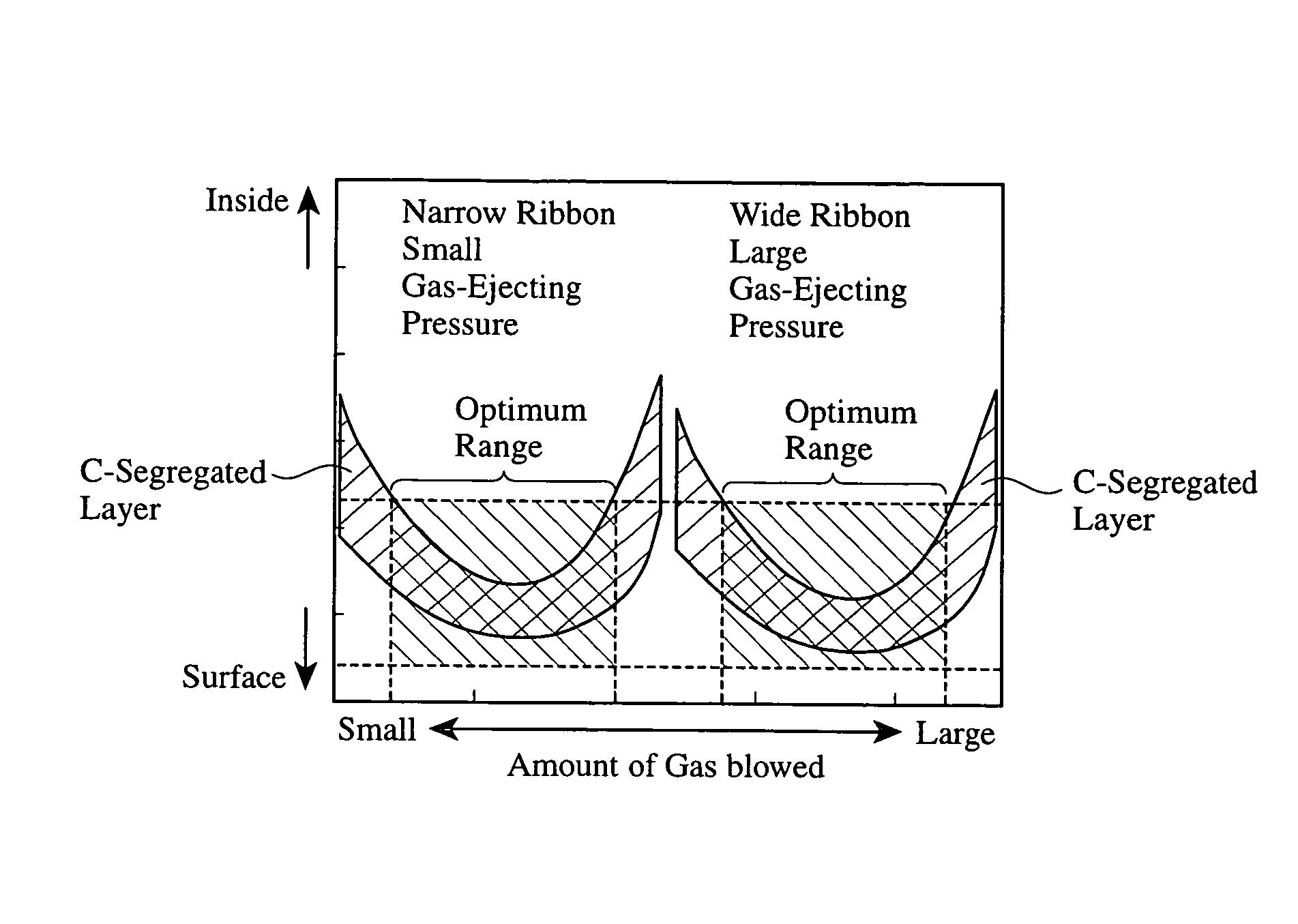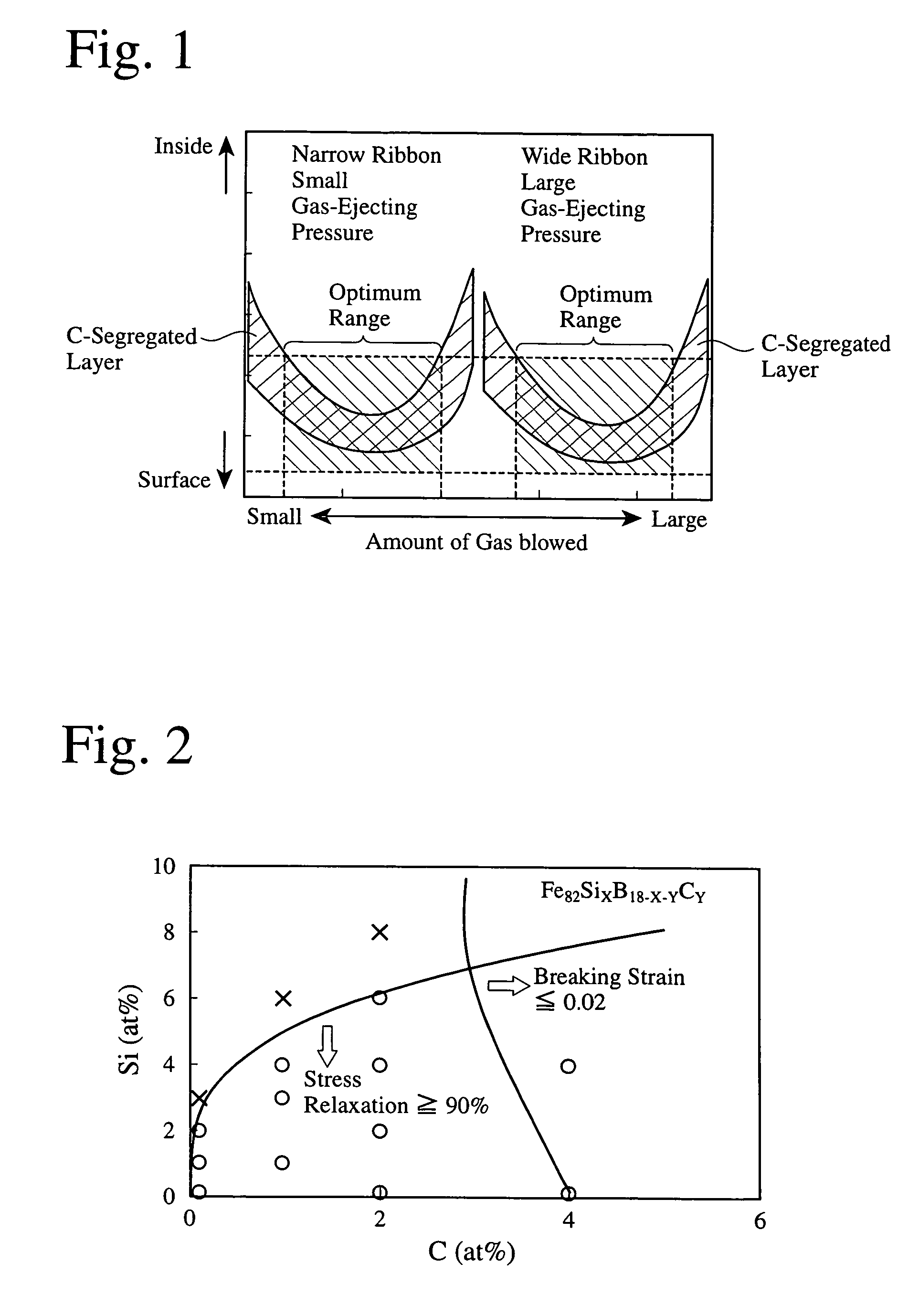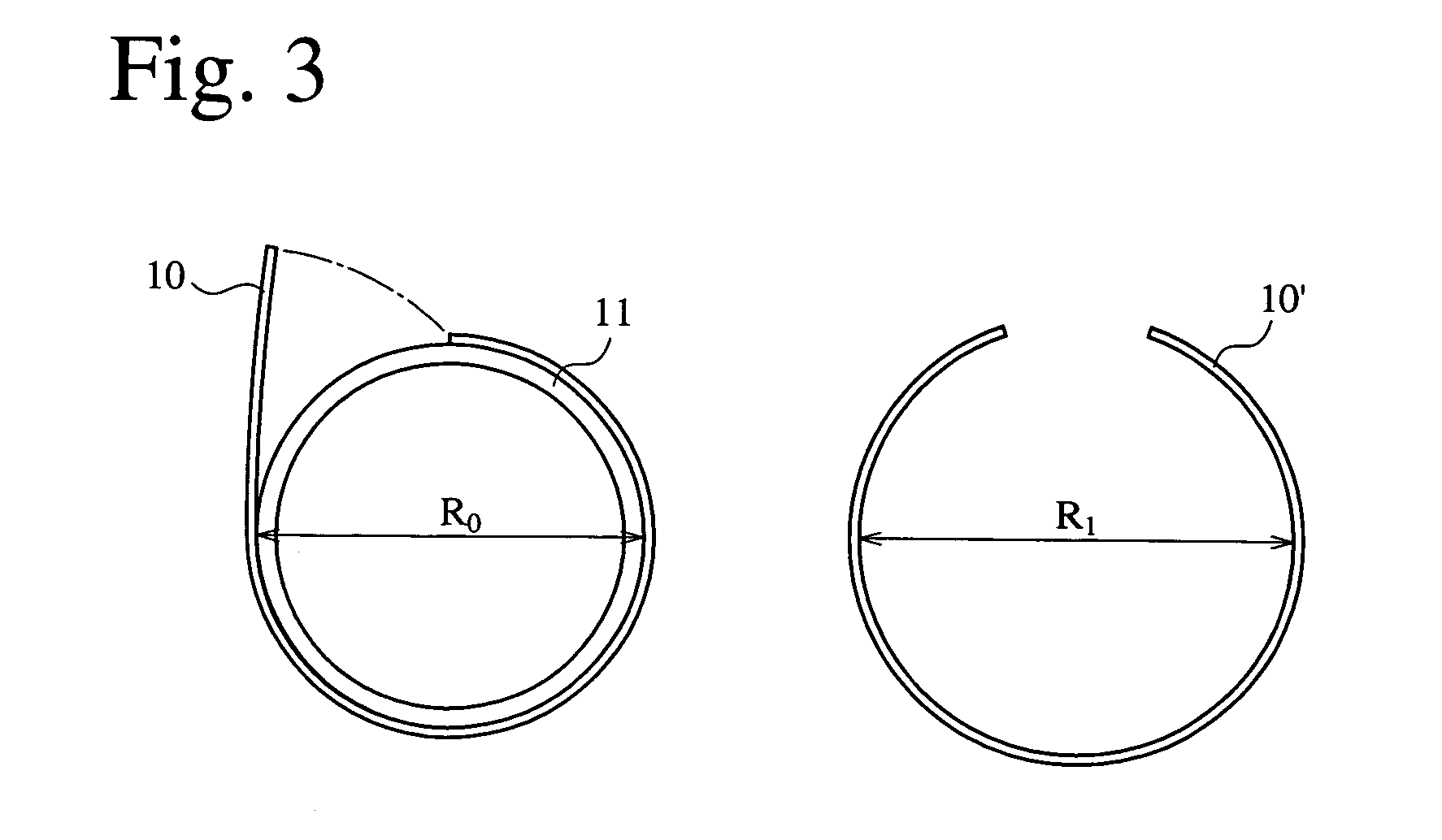Fe-based amorphous alloy ribbon
a technology of amorphous alloy ribbons and amorphous alloys, applied in the direction of magnetic materials, magnetic bodies, cores/yokes, etc., can solve the problems of increased core losses at high operating magnetic flux densities, poor b80/bs and insufficient mass production of fe-based amorphous alloy ribbons. , to achieve the effect of high saturation magnetic flux density, low core loss
- Summary
- Abstract
- Description
- Claims
- Application Information
AI Technical Summary
Benefits of technology
Problems solved by technology
Method used
Image
Examples
example 1
[0030]200 g of an alloy having a composition of Fe82Si2B14C2 was melted in a high-frequency furnace, and ejected through a nozzle of the furnace onto a copper roll rotating at 25-30 m / s while blowing a CO2 gas from rear the nozzle, to produce Fe-based amorphous alloy ribbons having various widths of 5 mm, 10 mm and 20 mm, respectively, and a thickness of 23-25 μm. Each of the Fe-based amorphous alloy ribbons had a C-segregated layer at a depth of 2 to 20 nm from the surface. The Fe-based amorphous alloy ribbons were annealed at such temperatures as to minimize a core loss, which were within a range of 300 to 400° C. With the blowing rate of a CO2 gas changed, measurement was conducted with respect to the properties of the Fe-based amorphous alloy ribbons. The results are shown in Table 1.
[0031]BS and B80 were measured on single-plate samples, and a core loss W13 / 50 at a magnetic flux density of 1.3 T and a frequency of 50 Hz, and a core loss W14 / 50 at a magnetic flux density of 1.4 ...
example 2
[0040]200 g of alloy melts having compositions shown in Table 3 were rapidly quenched in the same manner as in Example 1 to form Fe-based amorphous alloy ribbons of 5 mm in width and 23-25 μm in thickness. The properties of each Fe-based amorphous alloy ribbon are shown in Table 3. The Fe-based amorphous alloy ribbons having high B80 can keep low core loss at high operating magnetic flux densities. Reference Sample 2 was subjected to element analysis in a depth direction from its roll-contacting surface. The results are shown in FIG. 5. The average surface roughness Ra of Samples 7 to 15 and Reference Samples 1 to 9 was 0.38.
[0041]
TABLE 3SampleCompositionB80BsB80 / BSNo.FeCoNiSiBC[T][T](×100%)782.0——2.016.00.051.6091.63298.6882.0——0.117.80.11.6251.65598.2982.0——1.016.90.11.6351.66598.21082.0——2.015.90.11.6151.64398.31182.0——1.016.01.01.6401.66198.71282.0——3.014.01.01.6381.65998.71382.0——0.115.92.01.6391.66698.41480.02.0—2.016.00.11.6561.68998.01580.0—2.02.016.00.11.6331.66598.1Ref.Sam...
PUM
| Property | Measurement | Unit |
|---|---|---|
| saturation magnetic flux density | aaaaa | aaaaa |
| magnetic field | aaaaa | aaaaa |
| frequency | aaaaa | aaaaa |
Abstract
Description
Claims
Application Information
 Login to View More
Login to View More - R&D
- Intellectual Property
- Life Sciences
- Materials
- Tech Scout
- Unparalleled Data Quality
- Higher Quality Content
- 60% Fewer Hallucinations
Browse by: Latest US Patents, China's latest patents, Technical Efficacy Thesaurus, Application Domain, Technology Topic, Popular Technical Reports.
© 2025 PatSnap. All rights reserved.Legal|Privacy policy|Modern Slavery Act Transparency Statement|Sitemap|About US| Contact US: help@patsnap.com



